Boka Bay is the most beautiful part of the Montenegrin coast, and by its beauty, vastness and lavish relief, is among the most interesting natural attractions in the world. Based on its method of formation, geologists claim that it is a Fjord – which originated by melting glaciers.

Mt. Lovćen on one side and the ornate peninsulas of Vrmac and Luštica on the other side round up Boka Bay and give it a picture of a lake of the unique charm. Actually, the sea has cut 20 mile into land creating two magical bays (Kotor and Risan), both entered through the Verige Strait. All plant species that are characteristic of mild southern climates grow in this area.
The unique beauty of Boka Bay is reflected in the diversity that almost does not exist in any part of the world. Boka Bay creates a magnificent contrast between the high bare cliffs and gorges, green hills and gentle shores. Risan Bay truely looks like a Scandinavian fjord, Verige Straight like Bosphorus, and the coast from Verige to Herceg Novi does not lag behind the French Riviera. The pleasure which this climate provides is unbelievable, so in spring it is possible to be lightly dressed and enjoy the charms of the sea, while at the same time watching the frozen peaks of Mt. Lovćen, or vice versa, from the icy peaks of Mt. Lovcen to watch summer at its foot.
It's not by chance that the leading personality of Romanticism, an English nobleman, poet and politician, George Gordon Byron, when he saw Boka said:
"At the birth of our planet, the most beautiful encounter between land and sea must have been on the Montenegrin coast."
This climate is not only beautiful because of its geographical beauty, its culture and tradition which evolved on it are beautiful and luxurious as well and exceptional personalities have grown in this area.
The sailing boats of Kotor, Prcanj, Dobrota, Risan and Perast, once sailed along all seas and oceans. Taking the same road, the world was continually coming to this region in the spiritual and material sense.
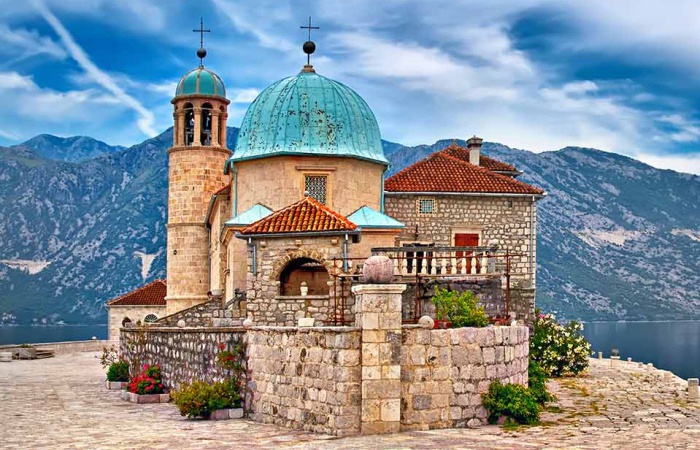
Isn't it an imposing fact that Ivo Visin from Prcanj, circumnavigated the world on a sailing ship. His journey lasted from 1852 to 1859, more precisely 7 years, 6 months and 19 days, and the ship on which he sailed the world was called Splendido, a Brik type one.
It's no coincidence, and it is also little known that Boka is the place where the first generatios of naval officers of imperial Russia were educated and trained for maritime skills.
It is important here to mention Matija Zmajević (1680-1735). A well-reputed Admiral of the Russian Fleet was born in Perast where he studied elementary and maritime school. He began his maritime career on his father's ships, Captain Krsto, a prominent sailor, shipowner, and an experienced warrior in the sea battles against the Turks and pirates. His maritime experience allowed him to be an excellent marine expert and warrior. As a young man in his home in Perast he met Peter A. Tolstoi, the representative of Russian Emperor Peter the Great, who visited Istria, Dalmatia and Boka Kotorska with the intention of meeting these coastal areas. Matija Zmajevic took his life opportunities to Dubrovnik, and from where he went to Constantinople where the head of the Russian Embassy was Petar A. Tolstoy, whom he met about ten years ago in Perast. Tolstoy received him in the service of the embassy and ranked him as the captain. Tolstoy sent Zmajevic to Russia, after he personally passed the exam before him in shipbuilding and sailing in Karlovy Vary in 1712. The emperor gave him the rank of the captain of the battleship I level. He was deployed in the galleys fleet, and under the chief commander Admiral Apraksin he participated in a significant battle near Gangut (Hankoa), in southern Finland. Zmajević commanded the first squad of galleys. In a very skillful maneuver he managed to surround and capture six Swedish galleys and one frigate. In the year of 1719 he received the rank of a Counter-Admiral and an order to attack the Swedish coast with a fleet of galleys. He turned hundreds of commercial settlements into fire. The Chief Commander, Admiral Aproxin conducted operations ashore and Zmajevic at sea. The conquest at the beginning of 1721, in which Zmajević became famous for the third time, forced Sweden to make peace with Russia. The dominance of the Baltic Sea was won by Russia. Afterwards, Zmajevic was promoted to the rank of Vice-Admiral. After the war, Zmajevic was entrusted with the reconstruction and construction of the fleet. At one time he was the commander of the port of Petrovgrad and a member of the Admiral College. He was awarded with Tsar's gold medal and golden necklace, he also received three flags (two Russian and one Swedish). In 1725 Catherine the Great awarded him with the Order of Alexander Nevsky and named him Admiral. In 1728, he was appointed chief commander in Tavrovo, where he died, and was buried with all military honors in Moscow.
Famous names that have been brought out from various epochs of social development are numerous. There is one truth that connects them, all of these persons were citizens of the world, and Boka Bay from which they originated was the world, a network of cultures and natural beauties. In order to explore the famous personages, culture and natural beauty of this region, one human life is not enough.
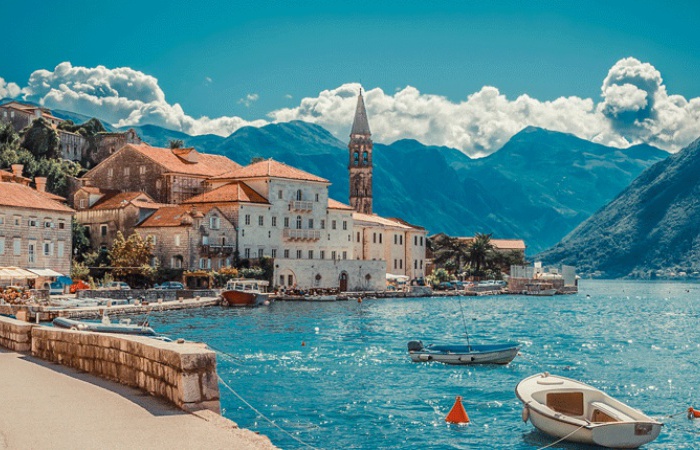
There are few cities in which civilization has started so long to make its own way, as in Kotor and its surroundings. Numerous monuments of spiritual and material culture have been preserved which speak of the imposing tradition of this place, which, unfortunately, is little known about.
For centuries, the patinatedd city hides the uninitiated wealth of spiritual and material monuments of culture in itself.
A city that was a crossroads of roads, and which was the final road for many seafarers who brought the world with them. This city is surrounded by solid walls built during the time of Byzantium, Nemanjić Dinasty and the Venetians. The walls are up to 20 m high and up to 10 m thick. There is an old fortress on St. John's Hill (260m) above the city. The walls of the Old Town are a unique example of fortification architecture in Europe. The city has three entrances: 1. "Sea gate" renovated in Renaissance style in 1555, leading to the city promenade and the coast; 2. "River Gate" reconstructed in the same style in 1540, (to commemorate the victory over the Hajrudin Barbarossa fleet), leading towards Risan and Herceg Novi; 3. "Gurdic Gate", also reconstructed at the end of the 17th century, leading towards Trojica, ie the intersection of the roads towards Cetinje, Budva and Tivat. The city is characterized by numerous squares, smaller and bigger and narrow curved streets. The biggest and architecturally well-designed is the" Square of Arms" entered from the main gate on the coast. It contains several valuable old buildings: the Renaissance Prince's Palace, a baroque clock tower from the XVII century, built at the site of a medieval torture tower, which is in the form of a stone pyramid raised on a rectangular column, which is traditionally a pillory of shame. Also, there is a very beautiful square on which the Renaissance Baroque Pima palace was built, with a terrace that is held by two archivolts and with the longest balcony on the Adriatic coast.
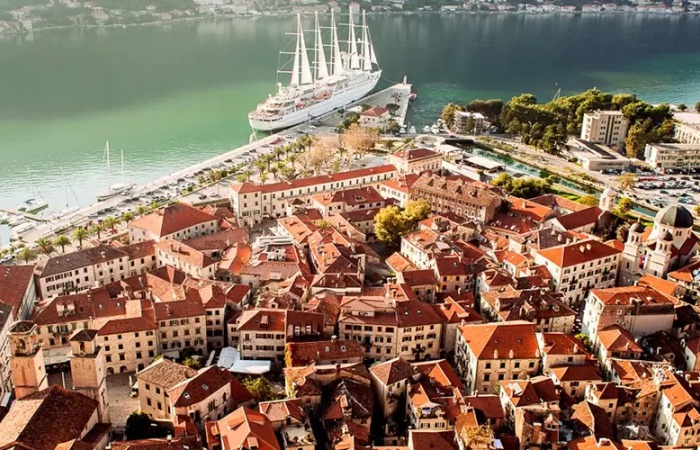
There is a Maritime Museum in the city of Kotor, where numerous collections of weapons, old folk costumes, models and pictures of Boka's boats are kept.
The Historical Archive is of great importance too, where you can find documentation dating back to 1326 (the time of the reign of Stefan Decanski).
The Cathedral of St. Tryphon is the most monumental monument of this area built in 1166. It exists 326 years before the discovery of America, and 254 years before the beginning of the rule of the Venetians in Kotor. It is 544 years older that the Church of St. Paul in London, 69 years older than Notre Dame in Paris, 313 years older than the Dormition Cathedral in Moscow in, 460 years older than the Basilica of St. Peter in Rome, 17 years years older than Studenica, and 169 years older than Visoki Dečani. The cathedral represents a cultural and historical monument of priceless value not only because it was created before many cathedrals in Europe but because of its architectural solutions, decorative sculptures, the famous ciborium, fragments of frescoes from the 14th century, and as such it is a part of the cultural heritage of the world. Also, among other churches in Kotor there are: the church of St. Luka from 1195, the church of St. Mary renewed in 1221, the church of St. Paul from 1266, the church of St. Nicholas from 1344, the church of St. Clara with the Franciscan Monastery in which there is a library with about 20,000 books and 50 incunabulas (the oldest printed books which are up to 1500 years old).
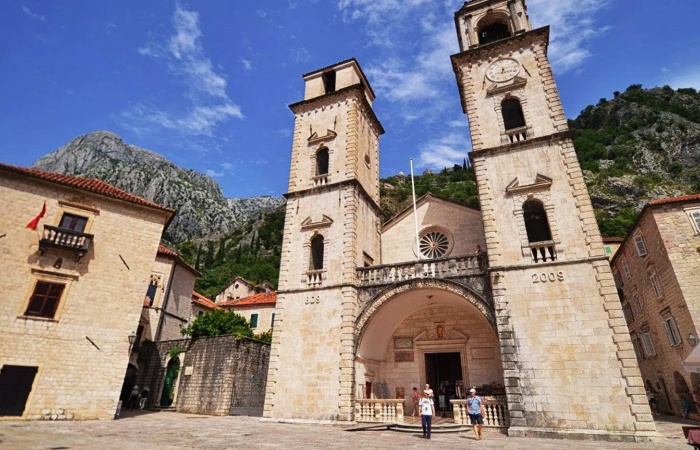
The most significant palaces in Kotor are: Buća Palace (XIV century); Drago Palace (XV century); Pima Palace (XVI century); Bizanti Palace (XVII century); Grubonja Palace (XVII century); Vrakjen Palace (XVIII century).
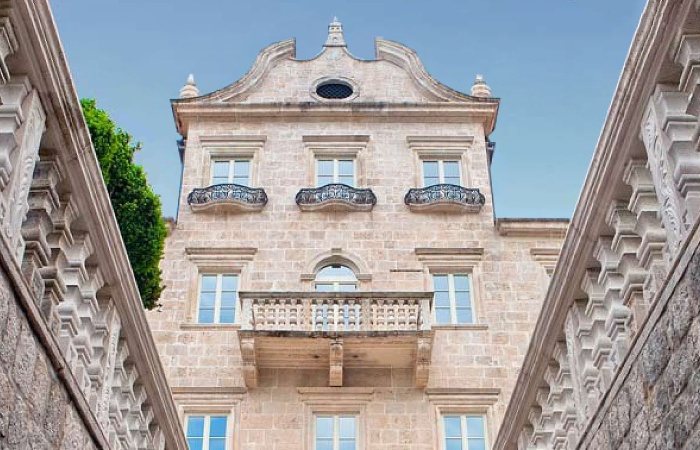
The settlement of Dobrota located on the northern coast of Boka Bay is the extension of this monumental town, which is actually the painted Kotor in a series of small settlements of about 7.5 km in lenght. It is rich in beautiful and large baroque palaces and houses with motifs of domestic and world architecture. The Tripković Palace and the Dabinović Palace stand out the most. There are two most important churches in Dobrota: St. Eustahie Church and St. Matthews Church that preserve the precious memories of the past, artistic paintings, silver objects, the famous lace of Dobrota.
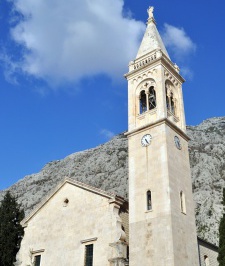
The extension of Kotor on the other side, on the west coast of Boka Bay, is embodied in the seaside place of Prcanj. This place is an old maritime nest. All its history was written at sea. It stretches about 4 km in length. Prčanj also has precious cultural historical treasure. The maritime past left traces in numerous palaces and churches. The gothic building "Three Sisters", stands out among the palaces involving the legend of the unfortunate love of the three sisters who fell in love with one guy. Our Lady temple in Prcanj is a unique example of the continuity of artistic creation from ancient times to the present. There, the recent works of domestic artists are added to the old works of renowned foreign masters. This temple is a synergy of religious culture and the history of the place.
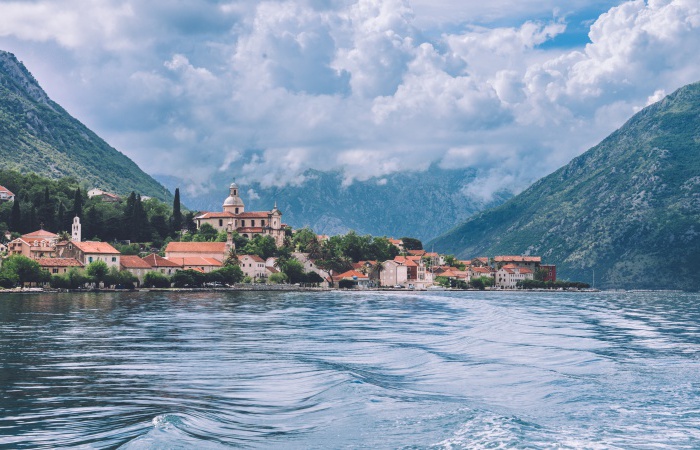
The exceptional climatic conditions gave this place the status of a rehabilitation centre. Namely, the Balneoclimatology Insitute from Belgrade found that climate, sun and air baths can be used as a therapeutic prophylactic agent as well as baths of natural cold and hot water, which are characteristics of this place - Prcanj. The conditions of this site are extremely beneficial for the natural treatment of the following diseases: bronchial asthma; bronchi-ectasia and chronic bronchial superstition. The practice has shown that in 90% of cases there is a healing or improvement of the state of health. Also, the effect of this climate on human health is beneficial.
With an equally rich history and culture, places and stories are being strung together. Thus, Perast and Risan are equally rich in culture and history, being the diamonds in the ring of Boka Bay.
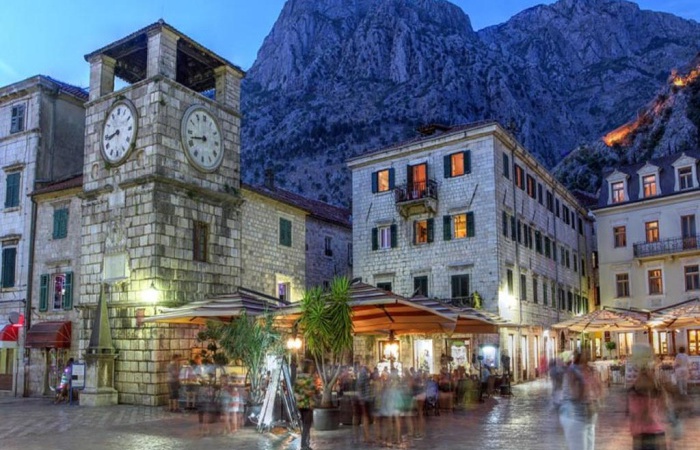
All travelers, writers and publicists of the world's voices admired this ring. They wrote that Boka Bay is one of the most beautiful and magnificent areas in the world. Boka is a pleasure place for painters, poets and writers. Painters are roused by what nature has accomplished here, and in the nature of Boka, and in its people, there are inexhaustible sources of inspiration. It is a magnificent description of Boka Bay of our famous Stefan Mitrov Ljubisa. The poet Aleksa Šantić called Boka Bay "the bride of the Adriatic", Njegoš was enthralled by its charms and dedicated her several wonderful songs, while Njegoš's friend, Mr. Ljuba Nenadović poetically may have best addressed it, who with heartfelt joy sang to Boka:
